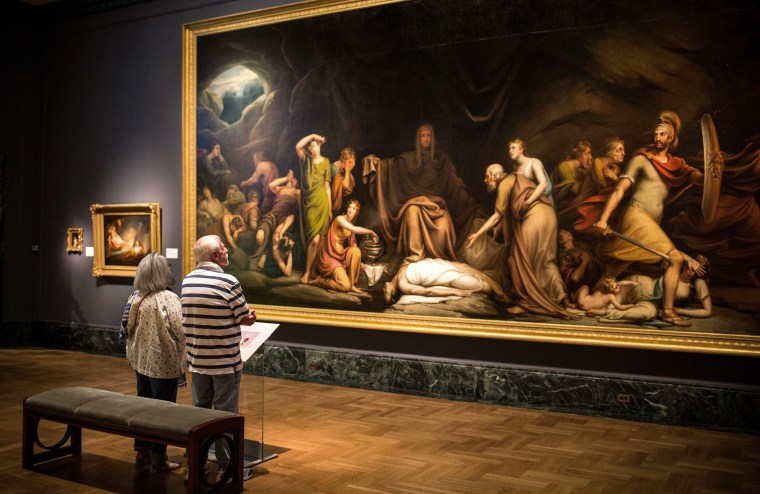A federal judge involved in the Detroit bankruptcy is working on a plan that would add roughly $500 million to the city's coffers and transform the publicly-owned Detroit Institute of the Arts (DIA) into a private non-profit. U.S. District Judge Gerald Rosen is currently mediating negotiations between a handful of philanthropic organizations, including the Ford Foundation, which would raise the money in exchange for taking the DIA off the city's hands. Though much about the negotiations remains unknown, the $500 million is reportedly intended to defray cuts to public worker pensions and city services.
On Wednesday, the DIA itself publicly embraced the proposal.
"At a meeting with the mediators on Tuesday, the DIA expressed enthusiastic support for the work that has been done to date, and pledged to help refine and implement the plan in the weeks ahead," the DIA announced in a statement. "The plan engages national and local foundations among other funding sources to create a mechanism for providing cash for the City, while ensuring the present and future safety of the DIA collection."
When asked for more details, a DIA spokesperson said the museum had been advised by its attorneys not to comment.
Under the terms of the plan, the DIA's art collection would remain intact, and public employee pensions may not be cut as drastically as they otherwise would be. Kevyn Orr, Detroit's Emergency Manager, had previously considered auctioning off some of the DIA's art in order to improve municipal finances. He has also insisted that current and retired municipal workers must accept substantial cuts to their retirement benefits as a result of the city's bankruptcy.
While the new plan may look like an ingenious way to mitigate pension cuts and save the DIA's collection, not everyone is ebullient at the news. Michael Mulholland, vice president of the Detroit public sector union AFSCME Local 207, said the $500 million was not a fair price for the DIA's art collection.
"As a union leader, we are concerned that the $500 million is a lowball figure so they can give corporations, through their foundations, a way to buy the art at fire sale prices, and then toss the money to the pensions to make it look in the papers like they give a darn about our pensions," he said.
The $500 million price tag is courtesy of auction house Christie's, which recently conducted an appraisal of some of the DIA's collection and found the selected pieces to be worth between $452 and $866 million in total. Christie's only calculated the worth of about 2,800 of the museum's 66,000 pieces. Other experts have estimated the museum's collection to be worth as much as $2.5 billion, nearly five times what is currently being offered.
Public sector workers may not stand to benefit much from the deal either. Orr has claimed that the city's public retirement system faces a $3.5 billion long-term shortfall, though outside observers dispute that figure. A $500 million payout would defray only one-sixth of that long-term debt—and pensioners may have to share the money with municipal government.
"They're saying they're going to use some for city services," said Mulholland. "Well, that $500 million isn't going to go very far under those circumstances."
The Ford Foundation and the office of the Emergency Manager did not respond to requests for comment.
CORRECTION: An earlier version of this article failed to note that Christie's had only appraised a fraction of the DIA's artwork, not all of it.
